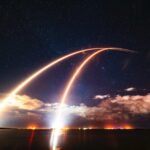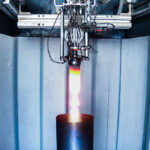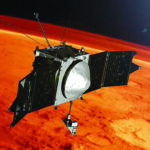There’s been a lot of speculation recently about interstellar visitor 3I/ATLAS—much of which is probably caused by low-quality data given that we have to observe it from either Earth, or
phys.org3- Page
Chile’s Atacama Desert is one of the darkest spots on Earth, a crown jewel for astronomers who flock to study the origins of the universe in this inhospitable desert along
Observations with the instrument SPHERE at ESO’s Very Large Telescope have produced an unprecedented gallery of “debris disks” in exoplanetary systems.
The asteroid Bennu continues to provide new clues to scientists’ biggest questions about the formation of the early solar system and the origins of life. As part of the ongoing
The shelf life of a sunscreen, the stability of mayonnaise, the effectiveness of a drug; these all depend on what is happening within the materials that make up gels or
Since humanity’s first steps on the moon, the aspiration to extend human civilization beyond Earth has been a central objective of international space agencies, targeting long-term extraterrestrial habitation. Among the
ESA’s first Scout mission, HydroGNSS, was launched on 28 November 2025, marking a significant step in advancing global understanding of water availability and the effects of climate change on Earth’s
A planet’s habitability is determined by a confluence of many factors. So far, our explorations of potentially habitable worlds beyond our solar system have focused exclusively on their position in
Since the 1950s, humanity has been searching for extraterrestrial life with increasingly sophisticated tools. But after decades of space probes, meteorite analysis, radio telescopes, and UFO investigations, what have we
One of the most elegant theories about the origins of life on our planet is that it was kick-started by a delivery from outer space. This idea suggests that prebiotic
-
 012024 in Review: Highlights from NASA in Silicon Valley
012024 in Review: Highlights from NASA in Silicon Valley -
 02Panasonic Leica Summilux DG 15mm f/1.7 ASPH review
02Panasonic Leica Summilux DG 15mm f/1.7 ASPH review -
 03How New NASA, India Earth Satellite NISAR Will See Earth
03How New NASA, India Earth Satellite NISAR Will See Earth -
 04From Polymerization-Enabled Folding and Assembly to Chemical Evolution: Key Processes for Emergence of Functional Polymers in the Origin of Life
04From Polymerization-Enabled Folding and Assembly to Chemical Evolution: Key Processes for Emergence of Functional Polymers in the Origin of Life -
 05And Thus Begins A New Year For Life On Earth
05And Thus Begins A New Year For Life On Earth -
 06Astronomy Activation Ambassadors: A New Era
06Astronomy Activation Ambassadors: A New Era -
07SpaceX launch surge helps set new global launch record in 2024




